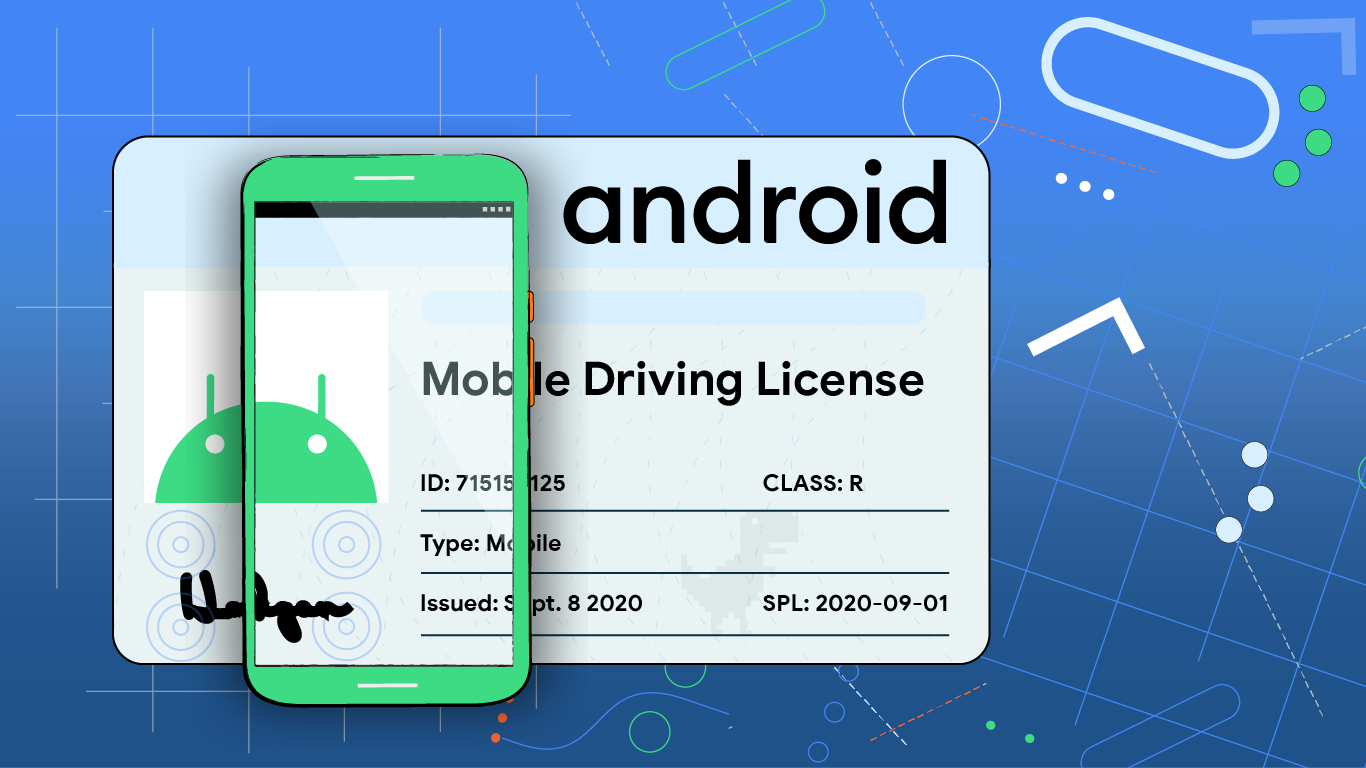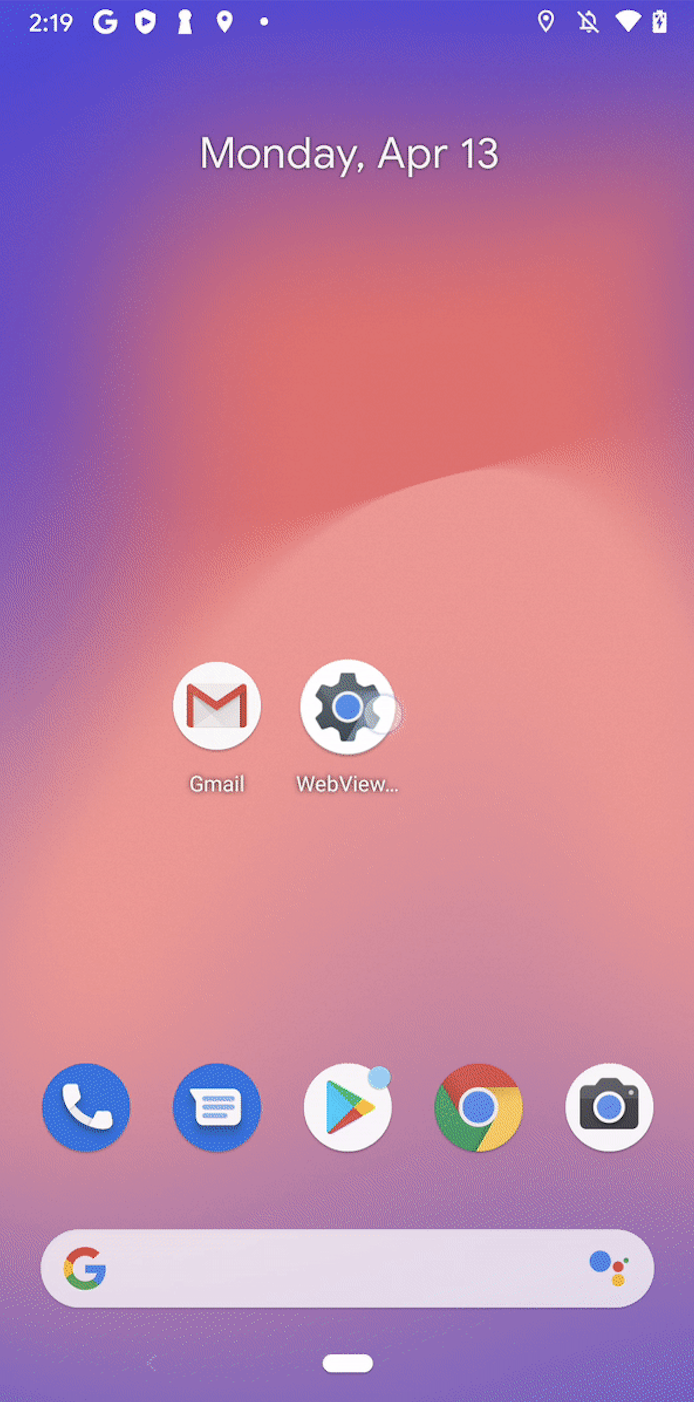Privacy-preserving features in the Mobile Driving License
Posted by David Zeuthen, Shawn Willden and René Mayrhofer, Android Security and Privacy team
In the United States and other countries a Driver's License is not only used to convey driving privileges, it is also commonly used to prove identity or personal details.
Presenting a Driving License is simple, right? You hand over the card to the individual wishing to confirm your identity (the so-called “Relying Party” or “Verifier”); they check the security features of the plastic card (hologram, micro-printing, etc.) to ensure it’s not counterfeit; they check that it’s really your license, making sure you look like the portrait image printed on the card; and they read the data they’re interested in, typically your age, legal name, address etc. Finally, the verifier needs to hand back the plastic card.
Most people are so familiar with this process that they don’t think twice about it, or consider the privacy implications. In the following we’ll discuss how the new and soon-to-be-released ISO 18013-5 standard will improve on nearly every aspect of the process, and what it has to do with Android.
Mobile Driving License ISO Standard
The ISO 18013-5 “Mobile driving licence (mDL) application” standard has been written by a diverse group of people representing driving license issuers (e.g. state governments in the US), relying parties (federal and state governments, including law enforcement), academia, industry (including Google), and many others. This ISO standard allows for construction of Mobile Driving License (mDL) applications which users can carry in their phone and can use instead of the plastic card.
Instead of handing over your plastic card, you open the mDL application on your phone and press a button to share your mDL. The Verifier (aka “Relying Party”) has their own device with an mDL reader application and they either scan a QR code shown in your mDL app or do an NFC tap. The QR code (or NFC tap) conveys an ephemeral cryptographic public key and hardware address the mDL reader can connect to.
Once the mDL reader obtains the cryptographic key it creates its own ephemeral keypair and establishes an encrypted and authenticated, secure wireless channel (BLE, Wifi Aware or NFC)). The mDL reader uses this secure channel to request data, such as the portrait image or what kinds of vehicles you're allowed to drive, and can also be used to ask more abstract questions such as “is the holder older than 18?”
Crucially, the mDL application can ask the user to approve which data to release and may require the user to authenticate with fingerprint or face — none of which a passive plastic card could ever do.
With this explanation in mind, let’s see how presenting an mDL application compares with presenting a plastic-card driving license:
- Your phone need not be handed to the verifier, unlike your plastic card. The first step, which requires closer contact to the Verifier to scan the QR code or tap the NFC reader, is safe from a data privacy point of view, and does not reveal any identifying information to the verifier. For additional protection, mDL apps will have the option of both requiring user authentication before releasing data and then immediately placing the phone in lockdown mode, to ensure that if the verifier takes the device they cannot easily get information from it.
- All data is cryptographically signed by the Issuing Authority (for example the DMV who issued the mDL) and the verifier's app automatically validates the authenticity of the data transmitted by the mDL and refuses to display inauthentic data. This is far more secure than holograms and microprinting used in plastic cards where verification requires special training which most (human) verifiers don't receive. With most plastic cards, fake IDs are relatively easy to create, especially in an international context, putting everyone’s identity at risk.
- The amount of data presented by the mDL is minimized — only data the user elects to release, either explicitly via prompts or implicitly via e.g. pre-approval and user settings, is released. This minimizes potential data abuse and increases the personal safety of users.
For example, any bartender who checks your mDL for the sole purpose of verifying you’re old enough to buy a drink needs only a single piece of information which is whether the holder is e.g. older than 21, yes or no. Compared to the plastic card, this is a huge improvement; a plastic card shows all your data even if the verifier doesn’t need it.
Additionally, all of this information is available via a 2D barcode on the back so if you use your plastic card driving license to buy beer, tobacco, or other restricted items at a store it’s common in some states for the cashier to scan your license. In some cases, this means you may get advertising in the mail but they may sell your identifying information to the highest bidder or, worst case, leak their whole database.
These are some of the reasons why we think mDL is a big win for end users in terms of privacy.
One commonality between plastic-card driving licences and the mDL is how the relying party verifies that the person presenting the license is the authorized holder. In both cases, the verifier manually compares the appearance of the individual against a portrait photo, either printed on the plastic or transmitted electronically and research has shown that it’s hard for individuals to match strangers to portrait images.
The initial version of ISO 18013-5 won’t improve on this but the ISO committee working on the standard is already investigating ways to utilize on-device biometrics sensors to perform this match in a secure and privacy-protecting way. The hope is that improved fidelity in the process helps reduce unauthorized use of identity documents.
mDL support in Android
Through facilities such as hardware-based Keystore, Android already offers excellent support for security and privacy-sensitive applications and in fact it’s already possible to implement the ISO 18013-5 standard on Android without further platform changes. Many organizations participating in the ISO committee have already implemented 18013-5 Android apps.
That said, with purpose-built support in the operating system it is possible to provide better security and privacy properties. Android 11 includes the Identity Credential APIs at the Framework level along with a Hardware Abstraction Layer interface which can be implemented by Android OEMs to enable identity credential support in Secure Hardware. Using the Identity Credential API, the Trusted Computing Base of mDL applications does not include the application or even Android itself. This will be particularly important for future versions where the verifier must trust the device to identify and authenticate the user, for example through fingerprint or face matching on the holder's own device. It’s likely such a solution will require certified hardware and/or software and certification is not practical if the TCB includes the hundreds of millions of lines of code in Android and the Linux kernel.
One advantage of plastic cards is that they don't require power or network communication to be useful. Putting all your licenses on your phone could seem inconvenient in cases where your device is low on battery, or does not have enough battery life to start. The Android Identity Credential HAL therefore provides support for a mode called Direct Access, where the license is still available through an NFC tap even when the phone's battery is too low to boot it up. Device makers can implement this mode, but it will require hardware support that will take several years to roll out.
For devices without the Identity Credential HAL, we have an Android Jetpack which implements the same API and works on nearly every Android device in the world (API level 24 or later). If the device has hardware-backed Identity Credential support then this Jetpack simply forwards calls to the platform API. Otherwise, an Android Keystore-backed implementation will be used. While the Android Keystore-backed implementation does not provide the same level of security and privacy, it is perfectly adequate for both holders and issuers in cases where all data is issuer-signed. Because of this, the Jetpack is the preferred way to use the Identity Credential APIs. We also made available sample open-source mDL and mDL Reader applications using the Identity Credential APIs.
Conclusion
Android now includes APIs for managing and presenting with identity documents in a more secure and privacy-focused way than was previously possible. These can be used to implement ISO 18013-5 mDLs but the APIs are generic enough to be usable for other kinds of electronic documents, from school ID or bonus program club cards to passports.
Additionally, the Android Security and Privacy team actively participates in the ISO committees where these standards are written and also works with civil liberties groups to ensure it has a positive impact on our end users.




Komentar
Posting Komentar